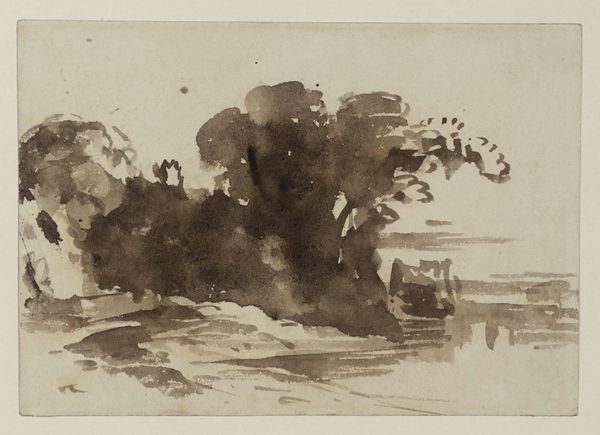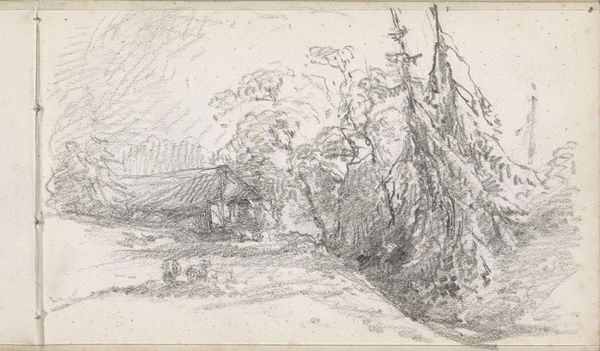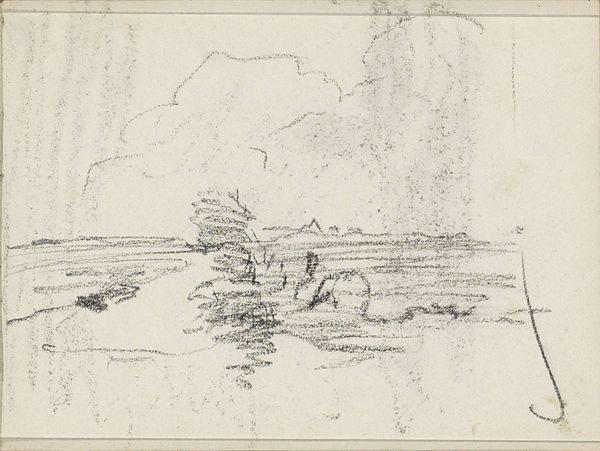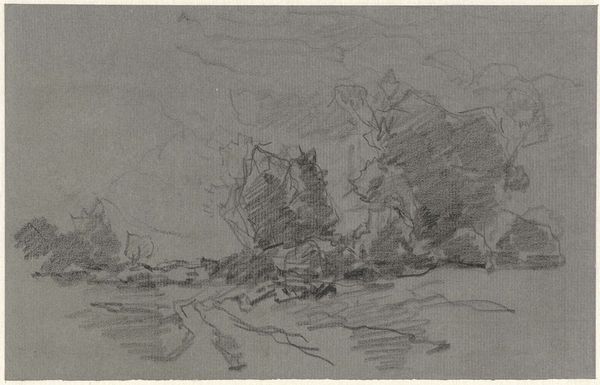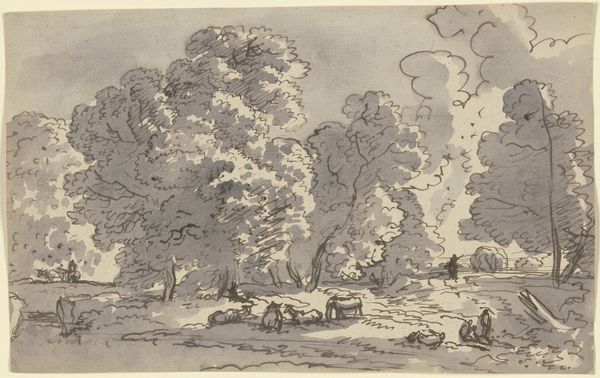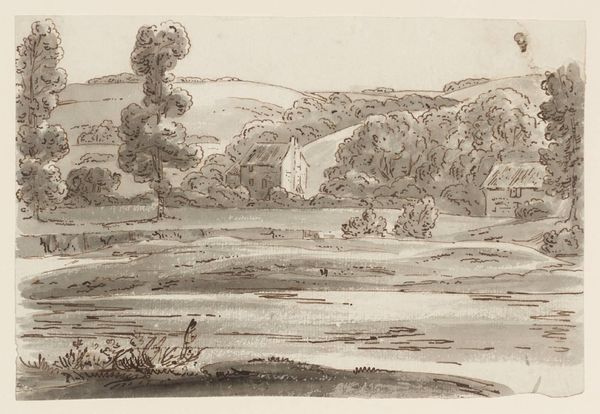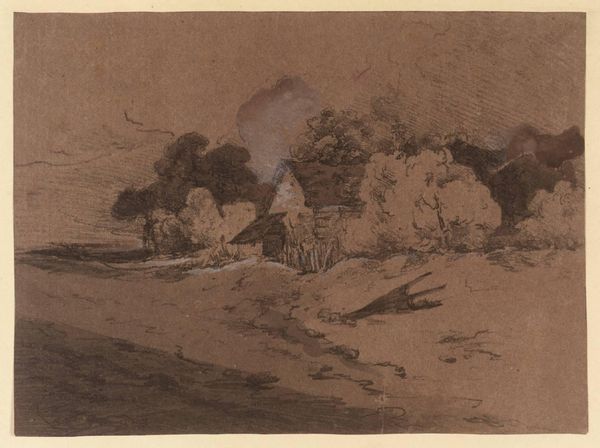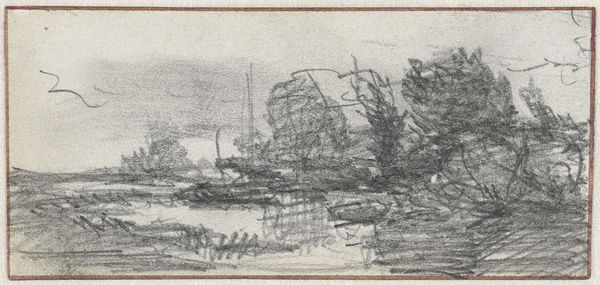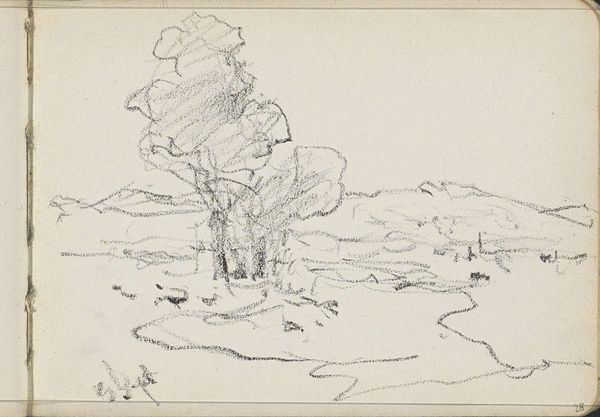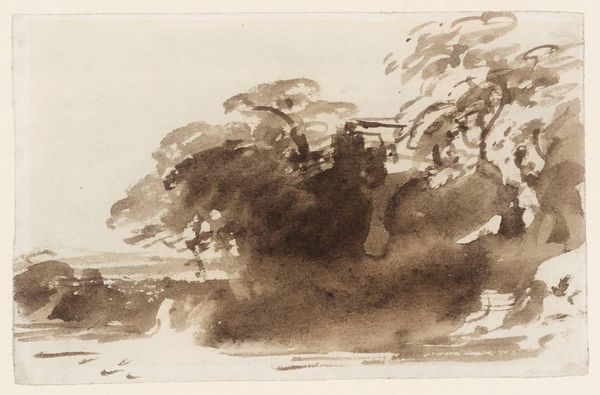
drawing, paper, watercolor
#
drawing
#
impressionism
#
landscape
#
paper
#
watercolor
#
watercolour illustration
#
watercolor
Dimensions: height 71 mm, width 102 mm
Copyright: Rijks Museum: Open Domain
Editor: Here we have Willem Roelofs’ "Landschap met onweerslucht," created in 1889, a drawing in watercolor on paper. The scene feels quite heavy, almost melancholic. I'm curious, what kind of dialogue do you think this piece is having with the social context of its time? Curator: Well, let's think about landscape painting in the late 19th century. It was often tied to national identity. Artists were frequently commissioned to document the rural countryside, in effect, mapping a sense of belonging. Roelofs gives us something quite different here. This isn't a celebration of the land; it's an exploration of mood, of fleeting weather. Consider the industrialization happening at that time, rapidly changing the landscape itself. Could this be a reflection of anxieties around that change, the instability that progress creates? What do you notice about the absence of human figures? Editor: That's a great point about the missing figures! It definitely makes it feel more somber, perhaps emphasizing the vulnerability of nature in the face of change. Is the choice to use watercolor, with its ephemeral quality, also a commentary? Curator: Precisely! Watercolor allows for transparency, for a sense of the atmospheric. Roelofs isn't aiming for photographic realism. He's capturing a feeling, a moment of impending storm. In this context, the art academies also played a role, pushing artists towards realistic representations; this breaks from those constraints by valuing individual expression and the subjectivity of experience. Editor: This makes me see it in a completely different light! The "impermanence" really jumps out. Curator: Exactly! Thinking about the historical context gives the piece another level of resonance. It isn't just a pretty picture, but rather a reflection of anxieties tied to rapid societal transformation and a resistance against formal constraint. Editor: It is such a complex and powerful artwork; thanks to your guidance I feel much more prepared to analyze artwork from a social and historical perspective. Curator: You're welcome! And it's been a nice reminder to keep questioning the established narratives around art history!
Comments
No comments
Be the first to comment and join the conversation on the ultimate creative platform.
